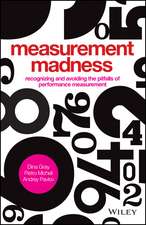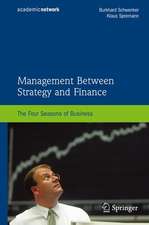Practical Methods of Financial Engineering and Risk Management: Tools for Modern Financial Professionals
Autor Rupak Chatterjeeen Limba Engleză Paperback – 11 aug 2014
In Practical Methods of Financial Engineering and Risk Management, Dr. Rupak Chatterjee— former director of the multi-asset quantitative research group at Citi—introduces finance professionals and advanced students to the latest concepts, tools, valuation techniques, and analytic measures being deployed by the more discerning and responsive Wall Street practitioners, on all operational scales from day trading to institutional strategy, to model and analyze more faithfully the real behavior and risk exposure of financial markets in the cold light of the post-2008 realities. Until one masters this modern skill set, one cannot allocate risk capital properly, price and hedge derivative securities realistically, or risk-manage positions from the multiple perspectives of market risk, credit risk, counterparty risk, and systemic risk.
The book assumes a working knowledge of calculus, statistics, and Excel, but it teaches techniques from statistical analysis, probability, and stochastic processes sufficient to enable the reader to calibrate probability distributions and create the simulations that are used on Wall Street to valuate various financial instruments correctly, model the risk dimensions of trading strategies, and perform the numerically intensive analysis of risk measures required by various regulatory agencies.
Preț: 504.85 lei
Preț vechi: 593.94 lei
-15% Nou
Puncte Express: 757
Preț estimativ în valută:
96.60€ • 105.26$ • 81.40£
96.60€ • 105.26$ • 81.40£
Carte tipărită la comandă
Livrare economică 23 aprilie-07 mai
Preluare comenzi: 021 569.72.76
Specificații
ISBN-13: 9781430261339
ISBN-10: 1430261331
Pagini: 400
Ilustrații: XXIV, 388 p. 186 illus.
Dimensiuni: 178 x 254 x 25 mm
Greutate: 0.57 kg
Ediția:1st ed.
Editura: Apress
Colecția Apress
Locul publicării:Berkeley, CA, United States
ISBN-10: 1430261331
Pagini: 400
Ilustrații: XXIV, 388 p. 186 illus.
Dimensiuni: 178 x 254 x 25 mm
Greutate: 0.57 kg
Ediția:1st ed.
Editura: Apress
Colecția Apress
Locul publicării:Berkeley, CA, United States
Public țintă
Popular/generalNotă biografică
RupakChatterjee,Ph.D., is an Industry Professor and the Deputy Director of the FinancialEngineering Division at the Stevens Institute of Technology. He is also theProgram Manager for the Accenture-Stevens Financial Services Analytics graduateprogram. Dr. Chatterjee has over fifteen years of experience as a quantitativeanalyst working for various Wall Street firms. His last role before returningto academia was as the Director of the Multi-Asset Hybrid DerivativesQuantitative Research group at Citi in New York. He was also the global BaselIII coordinator for all the modeling efforts needed to satisfy the newregulatory risk requirements. Previously, he was a quantitative analyst atBarclays Capital, a vice president at Credit Suisse, and a senior vice presidentat HSBC. His educational background is in theoretical physics, which he studiedat the University of Waterloo, Stony Brook University, and the University ofChicago. His research interests have included discrete time hedging problemsusing the Optimal Hedging Monte Carlo (OHMC) method and the design andexecution of systematic trading strategies that embody the hallmarks of capitalpreservation and measured risk-taking.
Caracteristici
Practical Methods of Financial Engineering and Risk Management introduces finance professionals and advanced students to the latest post-2008 concepts and tools to model and analyze more faithfully the real behavior of financial markets and better constrain asset allocation, derivative pricing and hedging, and risk control.


















